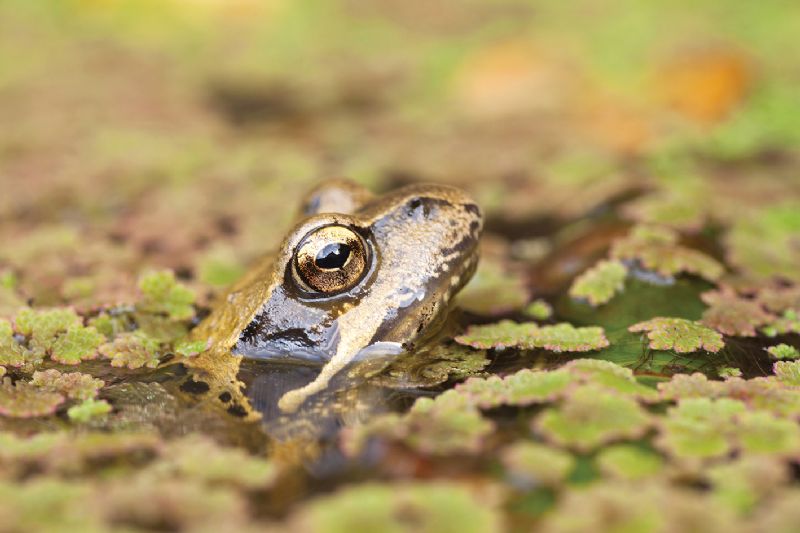- Home
- News, Articles & Reviews
We are hiring! Please click here to join our growing magazine delivery team in Gloucestershire!
Areas
Pets & Wildlife
Archive

Spring spawn
All Areas > Pets & Wildlife > Wildlife Matters
Author: Dorothy Glen, Posted: Wednesday, 26th January 2022, 09:00
Everyone knows the magical metamorphosis of our common frogs. In school, we learn about the masses of gloopy eyeball eggs, with little black dots that turn to commas inside, before hatching and wiggling all over the pond, sunning themselves in the shallows.
Children fish around clumsily with dipping nets trying to catch a tadpole which has sprouted legs, and eventually, those that survive the challenge of being a small tasty pond snack, become froglets. Like miniature adults, their tiny faces peep out of the water, or we might spot them hopping out of the pond into the undergrowth to explore life on land.
Frogspawn can be found in the UK as early as January
Growing up in the Midlands, I associate frogspawn with March, and I think of frogs and toads emerging with other bleary-eyed wildlife (and myself) in the spring. However, I discovered recently that frogspawn can be found in the UK as early as January, or even earlier if the conditions are right. It’s certainly not unusual to find it in February.
Common frogs emerge to spawn when we have several mild days in a row, whenever that might be, and studies indicate that this is happening early more frequently. In our warming climate, they are emerging 5.1 days earlier for every 1 degree rise (Carroll et al. 2009). Unsurprisingly, frogspawn is seen earliest in the milder South West, and spreads northwards with the spring.
In contrast, toads emerge and spawn a little later than frogs. Rather than clumps, their spawn is laid in long strings, and is draped over pond weed like beaded ribbons.
Toads prefer deeper bodies of water
Although I was pleased (read: totally overexcited) to discover a toad in my garden last summer, I’ve never seen toadspawn. This is probably because, rather than little garden ponds, toads prefer deeper bodies of water and will famously migrate en masse back to their breeding ponds.
So keep your ears open for amorous croaks, and your eyes on local ponds over the next month or two for clumps or strings of jelly-like eggs.
Outside breeding season, frogs and toads can roam 500m and 5km respectively, so if you don’t have a pond, you can still encourage them to your gardens by providing areas of shelter with log or rock piles, messy leafy areas or compost heaps, and areas of longer grass.
Here, they can shelter from predators, keep cool in the summer and warm in the winter, and they’ll repay you with excellent garden pest control.Copyright © 2025 The Local Answer Limited.
Unauthorized use and/or duplication of this material without express and written permission from this site's author and/or owner is strictly prohibited. Excerpts and links may be used, provided that full and clear credit is given to The Local Answer Limited and thelocalanswer.co.uk with appropriate and specific direction to the original content.More articles you may be interested in...


© 2025 The Local Answer Limited - Registered in England and Wales - Company No. 06929408
Unit H, Churchill Industrial Estate, Churchill Road, Leckhampton, Cheltenham, GL53 7EG - VAT Registration No. 975613000You are leaving the TLA website...
You are now leaving the TLA website and are going to a website that is not operated by us. The Local Answer are not responsible for the content or availability of linked sites, and cannot accept liability if the linked site has been compromised and contains unsuitable images or other content. If you wish to proceed, please click the "Continue" button below:




